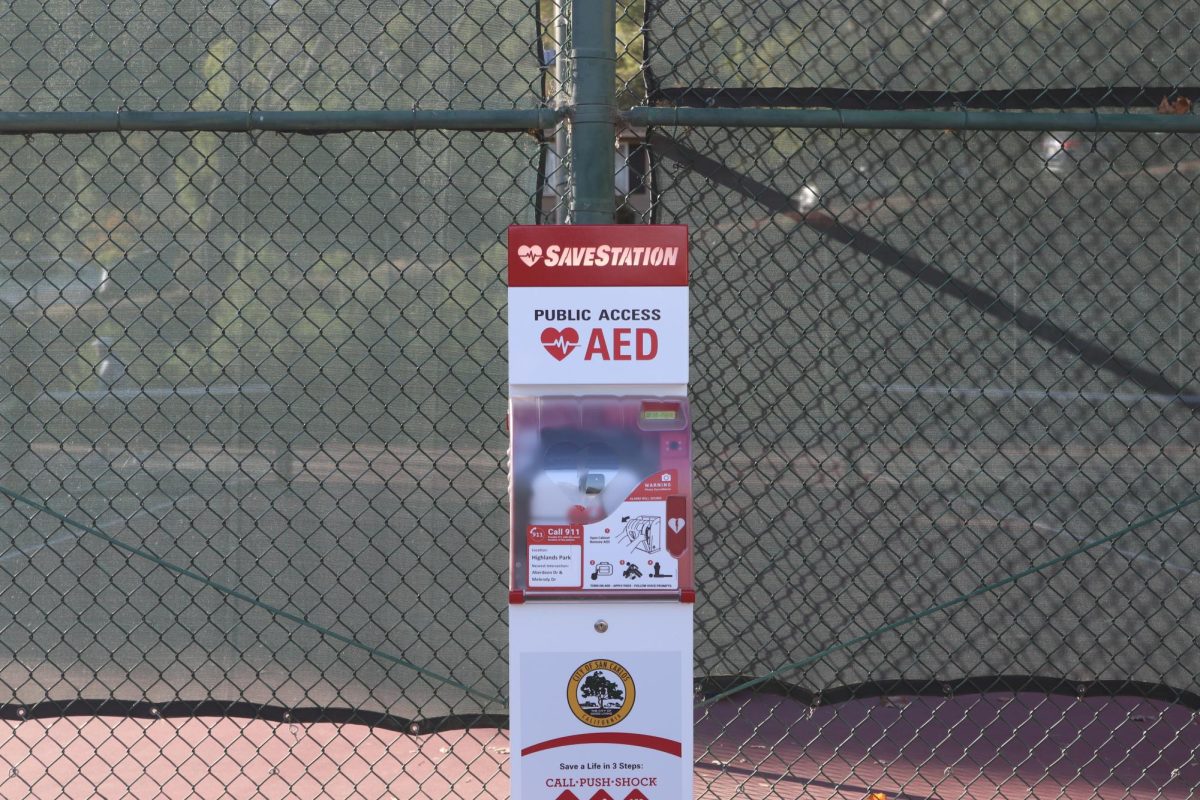The City of San Carlos recently installed seven life-saving automated external defibrillators (AEDs) at several city parks throughout the town.
The AEDs are made with life-saving technology that increases the chance of survival when having a cardiac arrest in a public place. The defibrillators are stored in a SaveStation, a climate-controlled external tower that can be monitored 24/7.
“The heart essentially is not effectively pushing blood out, and you can use an AED to shock the heart out of that rhythm,” said Rob Milano, a paramedic for San Mateo Fire Station 14. “You are introducing electricity into the heart, similar to how you jump-start a car. They are very effective.”
AEDs have been located in city buildings for several years, and they were not readily accessible in the case of a public emergency. However, they are now located at several different parks throughout the town, including Arguello Park, Crestview Park, Laureola Park, Burton Park, and Highlands Park. According to a San Carlos news release, the city was the first on the peninsula to provide 24/7 public access to AEDs.
The idea of implementing them in larger public spaces came after an incident occurred at a San Carlos park. A resident was taking a pickleball class at Highlands Park when they suddenly collapsed on the court. The player was saved through CPR performed by locals who were on the scene. As a result of the event, residents made a large push for wider AED implementation throughout the city.
“They definitely got us looking into it. We have had AEDs in the city for years, but they have always been inside our buildings, which isn’t super helpful if there is a sports league playing on the weekend or something similar,” said John Dugan, the mayor of San Carlos. “It is a pretty advanced system, and it’s made for someone to walk up and use it without prior training.”
When opened, the defibrillator provides the user step-by-step voice instructions catered to the patient’s needs. The user places two pads on the patient’s chest, allowing the machine to determine the patient’s condition. From there, the user is guided by the AED on how to save the patient’s life. Additionally, an alert is sent to city officials informing them that an AED was opened, allowing first responders to get to the scene promptly.
“They have taken all of the functions of a manual monitor and placed it in an automatic machine that basically reads your heart and sees if it presents a lethal rhythm. It’s not like you are talking back to the machine like someone would on a phone, it is just giving you automated instructions,” Milano said.
The AEDs also allow residents and park-goers to feel safer when performing physical activities in the parks and other public spaces.
“Considering that we have got a lot of seniors playing, I feel safe having it in case of an emergency,” said Mark Addis, a local tennis player.
Other cities around the peninsula also want to implement AEDs throughout their town after similar incidents prompted them to take action.
“They were just able to save a guy’s life in Foster City because they had an AED at the site where he had a heart attack and collapsed to the ground,” Milano said. “Foster City is now currently implementing a program to purchase machines and have them placed in every public area in the city.”
Despite the cost, San Carlos is proud to implement the machines in publicly accessible places and be a model to their neighboring towns.
“The implementation of the machines is very consistent with our values as a city. If it can save even one life, it is more than worth the time and expense,” Dugan said.












